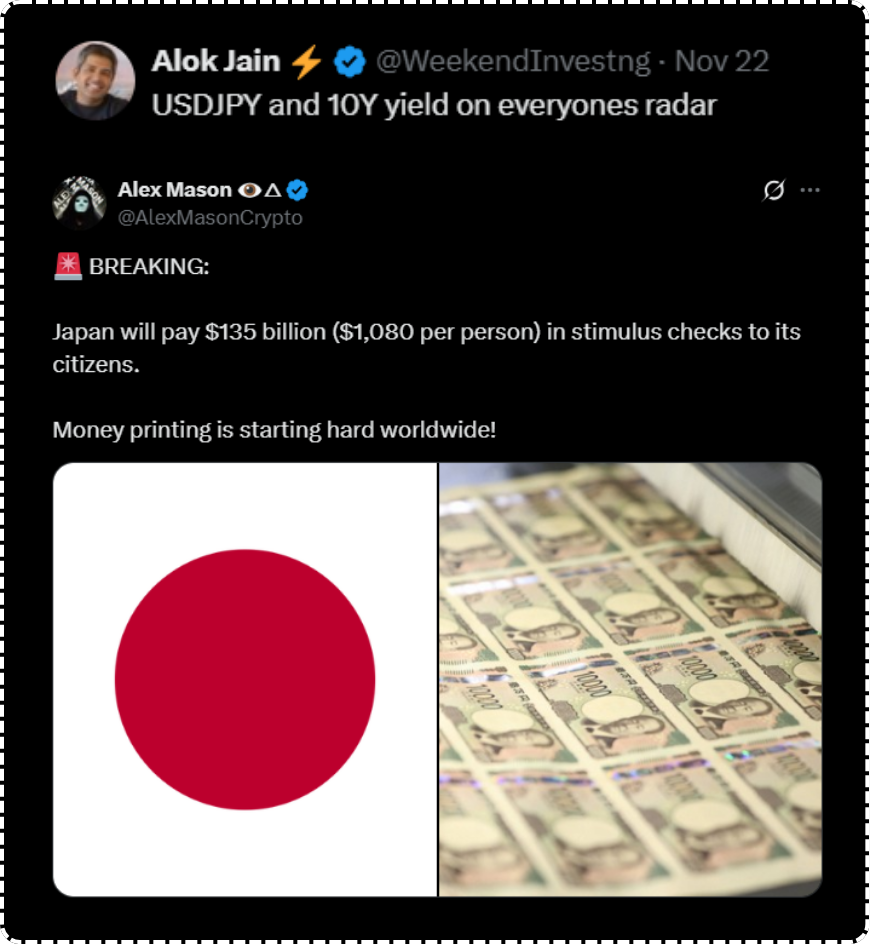
Where is the market headed?
The week started off with a dull session, lacking major action, and with the larger part of the market slipping. Overseas cues are not particularly positive; there’s continued tension in Japan due to their new stimulus measures, which is making the Japanese currency a bit vulnerable.
Domestically, there has been no news or clarification regarding the US-India tariff treaty, nor has the RBI explained why it allowed the rupee to crack on Friday. The market is stuck in a bit of a limbo, not really going anywhere today, but tomorrow’s expiry day could potentially bring back some volatility.
Market Overview
The Nifty moved down 0.42% today. This move broke a two-day low, and the very short-term upward momentum that suggested we might challenge the previous high has been aborted. While it can always come back, today’s move doesn’t instill immediate confidence.

Nifty Next 50
The weakness is more pronounced in the broader market. Nifty Junior was down more dramatically, at 0.98%, bringing it very close to its September lows. This is not a great formation, as the rest of the market appears to be in distress while the Nifty is stuck near all-time highs.
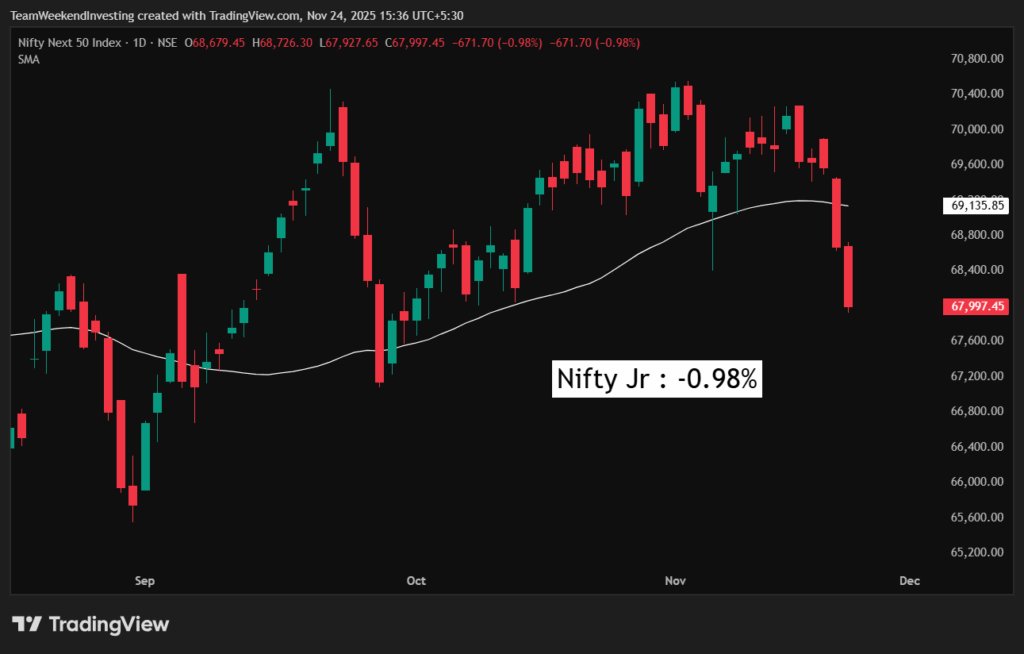
Nifty Mid and Small Cap
Midcaps were down 0.32%, and Small caps were down 0.65%. The small-cap index has now broken even its September low, having bounced two or three times from the 16,500-16,600 level previously. We will have to see what happens this time.

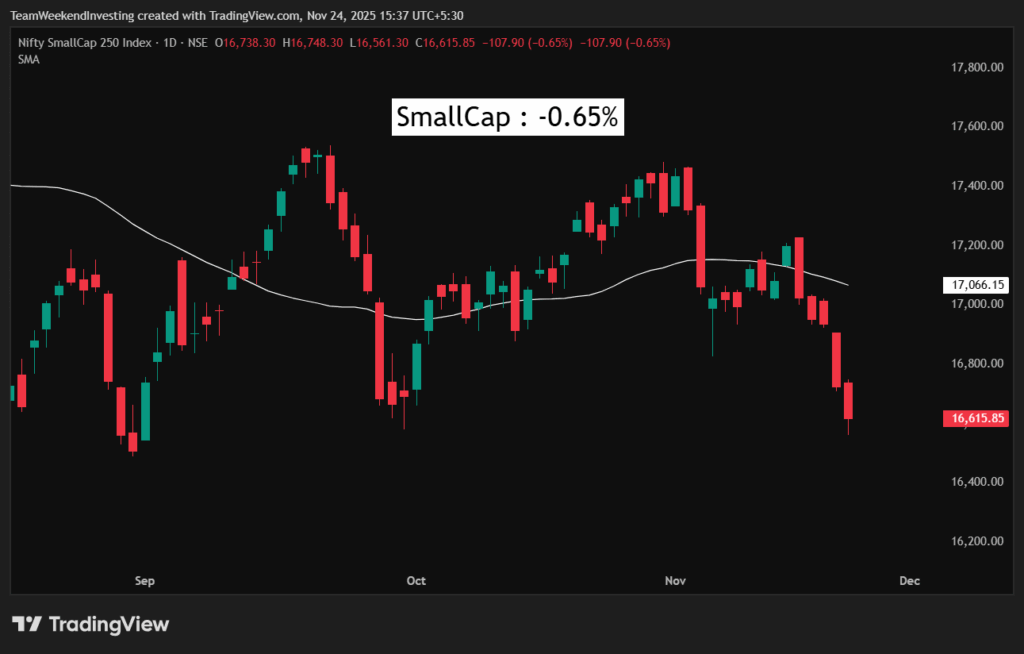
Bank Nifty
The only space that did not decline was the banking sector, with the Nifty Bank closing only 0.05% down.

GOLD
Gold was absolutely flat at minus 0.21%, and Silver was also flat at 0.16%.
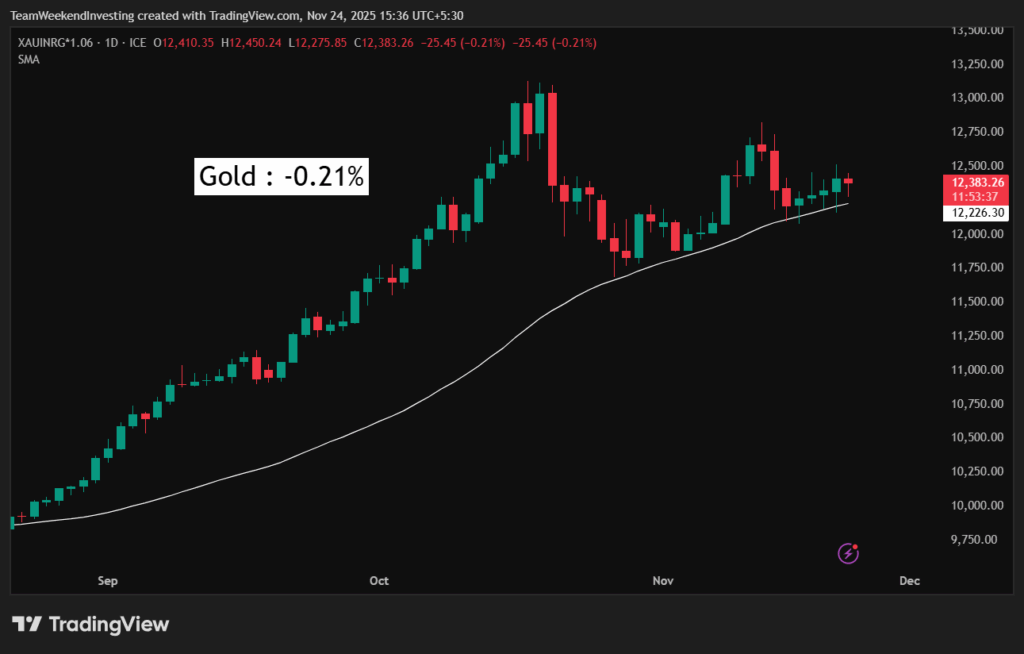
SILVER

Advance Decline Ratio
The Advanced Decline Trends do not inspire confidence right now. The entire day was spent in a gradual decline of the advances. While we started on an equal basis, by the end of the day, there were only 141 advances compared to 359 declines.

Heat Maps
The Nifty Heat Map shows a lot of heat (selling), with Mahindra & Mahindra, ITC, Bharat Electronics, Reliance, TCS, Bajaj Twins, Axis Bank, JSW Steel, and Tata Steel all losing ground. Stocks in the green for the Nifty were Wipro, Tech Mahindra, Hero MotoCorp, and Bajaj Auto.
In the Nifty Next 50 space, there was hardly any green, with only Canara Bank showing a marginal gain. Endurance Technologies, CG Power, Adani stocks, Hindustan Aeronautics, Solar Industries, BPCL, Mazagon Dock, PFC, and IRFC all lost ground for the day.

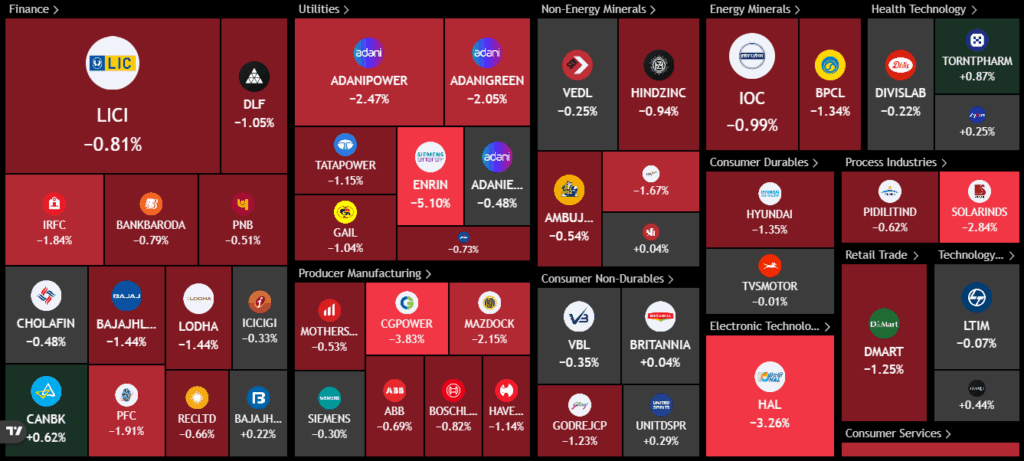
Mover Of The Day
The Mover of the Day was Orient Electric, which crashed very hard, losing 9% today. The stock has plummeted from near ₹215 recently down to the ₹150s. This serves as a reminder to always pay attention to trends and pivots; when big pivots are being breached, the technical charts often provide a warning ahead of such sharp moves.

Sectoral Overview
In the Sectoral Trends, Nifty IT managed a 0.4% gain, standing out as the sole sector in the green. All other sectors lost ground, led by Defense, which lost the most at 2.5%. Real Estate was down 2%, and both Public Sector Enterprise and Central Public Sector Enterprise sectors lost 1.4% and 1.3%, respectively. Metals were down 1.2%, and Energy Commodities lost nearly 1%. There was no escape from the selling pressure in any sector except IT.

Sector of the Day
Nifty India Defence Index
The defense index has now virtually come back to its September levels, with Mishra Dhatu Nigam, Astra Microwave Products, BEML, Garden Reach Shipbuilders, and Solar Industries leading the sector down.


U.S. Market
In the previous session, the US market showed decent gains: S&P 500, Dow Jones, and Nasdaq were up approximately 1%, while the Russell 2000 saw a huge markup with a 2.7% gain, reflecting strength in the broader US market.
Stocks like Target Corp, Accenture, Charter Communications, PayPal, and UPS were going up. The disclaimer states that the Weekend Investing US portfolio could hold some of these stocks, and these are not recommendations.


Tweet Of The Day
The Tweet of the Day discusses how a large percentage of people (around 60-75%) wake up to chase a trend only after it has completed most of its move. This has been seen cyclically:
- Many folks missed the huge equity move between 2020 and October 2021 because the COVID narrative led them to sell or not invest.
- The subsequent boom in real estate in many Indian cities from 2021-2022 to 2023-2024 has recently matured, and those who watched from the sidelines missed that rally.
- Now, from around 2024 onwards, there has been a huge move in precious metals (gold and silver), and hardly anyone has participated in that either.
These trends will keep cycling. The key takeaway is to not be bitter about missing a rally. It is very difficult to successfully time the exact moment to switch between asset classes. Proper asset allocation is key. Instead of trying to time the market by getting out of all your stocks and suddenly buying gold, for example, you should participate in everything. This can be done by allocating more to assets that are performing well, or by using a system that dynamically allocates less to assets that aren’t moving. The objective is to participate in everything and avoid trying to time any asset class perfectly.

The other tweet concerns the Japanese yen and the rising yields. Japan is initiating a huge stimulus by distributing checks of $1,000 per person to its citizens, adding to the ongoing global money printing. The US is doing it, Japan is doing it, and even India is doing it through various schemes.
Politicians have found an easy formula: spend money on people, run a deficit, secure votes, and let the next government worry about the debt. It’s crucial to understand that there is no free lunch; future generations will pay for this. Taxpayers will likely foot the bill, or if they revolt, the government may resort to confiscating assets. This is the prevailing global situation.
The Japanese stimulus could cause the yen to crash. To control this, the Japanese yield may be allowed to rise. If the yield goes up, the carry trade (where borrowing is done in Japan and investments are made elsewhere) can unwind, which could cause the whole global equity house of cards to start coming down.
